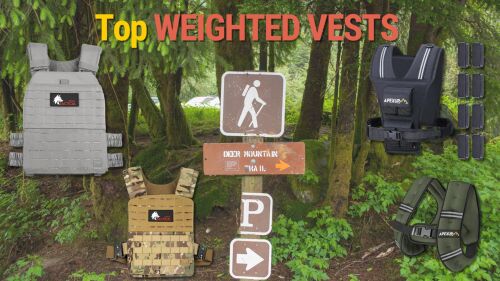Functional fitness is critical to successful operations, not to mention a long life, so it’s vital that we identify the right exercises to incorporate into our workouts. After all, our job requires us to be physically strong, agile and mentally sharp at all times. Whether we are performing a lift assist or rushing to an emergency scene, our physical conditioning and overall strength can mean the difference between success and failure on the job.
Having served as a firefighter and EMT for over a decade – and working as a fitness coach – I have identified five exercises that are essential for improving the strength, endurance and overall fitness. These exercises target key muscle groups, replicate movements performed on the job, and help prevent injuries associated with the physically demanding nature of the job.
These are not only essential for every first responder, but they are also my favorite to perform. Enjoy!
1. Foam-rolling
Foam-rolling. aka self-myofascial release, works by using your body weight to apply pressure on specific trigger points or hot spots within a muscle. By targeting specific trigger points and releasing tension in the fascia, these exercises help to improve overall mobility and range of motion, thus improving efficiency. Regularly incorporating foam-rolling into your fitness routine, before and after workouts, and through your shift can help alleviate muscle tension, improve flexibility and reduce the risk of injury. Additionally, foam-rolling can aid in recovery after long shifts or intense training sessions, helping you get ready and stay ready.
- Action: Start your next shift with a few minutes of foam-rolling your calves, quads, hamstrings and/or glutes. You may not like the feeling at first, but give it time and your muscles will thank you.
2. Active warm-up/mobility exercises
As I have gotten older, I have found that incorporating active mobility exercises into my fitness routine has been incredibly beneficial for my overall physical performance and wellbeing. After all, the nature of our work requires us to be constantly on the move and ready to respond to emergencies at a moment’s notice. By focusing on improving joint stability, flexibility and range of motion through active mobility exercises, I have noticed a significant improvement in my movement quality and overall functionality. These exercises help me maintain optimal mobility in key areas such as the hips, shoulders and spine, allowing me to move more efficiently and effectively during critical situations. Additionally, active mobility exercises have helped me prevent injuries, improve my posture and enhance my overall physical resilience.
- Action: Try my favorite exercise to improve mobility – the “Spiderman” – helps to improve hip mobility and function.
3. Deadlifts
Deadlifts play a crucial role in my training routine, as they are essential for building total-body strength and enhancing functional movement patterns. We frequently encounter situations where we need to lift heavy equipment, carry injured individuals, and perform tasks that demand a strong and stable lower back, legs and core. Deadlifts effectively target these muscle groups while also improving grip strength, which is vital for securely holding onto tools and equipment during emergencies.
When it comes to deadlifts, maintaining proper form is key to preventing injuries and maximizing the benefits of the exercise. Focus on keeping a neutral spine, engaging your core muscles, and lifting with your legs rather than relying solely on your back muscles. By honing our deadlift technique and progressively increasing the weight we lift, we can develop the strength and resilience necessary to handle the physical challenges we face on the job.
- Action: Try to incorporate different variations into your next workouts. My favorite variation is the “suitcase” deadlift with dumbbells.
4. Functional dumbbell exercises
I have found great value in incorporating functional dumbbell movements into my training regimen. These exercises are designed to replicate real-life tasks encountered during emergency response situations, making them incredibly beneficial for improving coordination, balance and strength – qualities that are crucial on (and off) the fire/rescue scene. Dumbbells are very versatile and are used width a wide variety of movements like squats, lunges, pulling, pushing and rotating. What I like about training with dumbbells is how they recruit stabilizing and core muscles, which transfers to improved performance and injury reduction.
- Action: If you are looking to improve your performance, start incorporating more dumbbell movements into your workouts. My favorite dumbbell exercise (at the moment) is the alternating arm chest press. This movement requires you to hold one dumbbell while pressing the other. You can feel the shoulders and core muscles working to stabilize through the movement.
BONUS: Another great exercise that I love to incorporate into workouts is the farmer’s carry or walk. This functional exercise simulates the task of carrying heavy loads over distances, a common scenario encountered in firefighting situations. This exercise targets grip strength, forearms, shoulders and core muscles, all of which play a crucial role in maintaining control and stability while handling equipment or performing rescues. The farmer’s walk also improves overall body coordination and strength endurance.
- Action: To perform a farmer’s walk, grab a pair of heavy dumbbells, one in each hand, and walk briskly for a set distance or time. Make sure to maintain an upright posture, engage your core, and take short, controlled steps.
5. High-intensity interval training (HIIT)
High-intensity interval training (HIIT) has become a fundamental part of my fitness routine due to its unique benefits for enhancing cardiovascular fitness and recovery. HIIT involves alternating between short, intense bursts of exercise followed by brief periods of rest or lower-intensity activity. This type of training is essential for first responders because it closely mimics the unpredictable and demanding nature of our roles, where we must be ready to exert maximum effort at a moment’s notice. Incorporating HIIT into your workout can improve cardiovascular fitness, endurance and overall conditioning, allowing you to be more efficient when using the SCBA. In addition, this type of training helps us build mental toughness, resilience to fatigue, and the ability to sustain high-intensity efforts – critical qualities for performing on the fireground or emergency scene.
- Action: Before incorporating HIIT into your workouts, you should establish a base level of cardiovascular fitness – which you should already have, of course! Some great movements to use for HIIT training are mountain-climbers, burpees, pushing, pulling, Kettlebell swings, and anything that gets your heart rate going. Play with different ratios of high intensity/low intensity as you build your level of fitness.
Final thoughts
The physical demands placed on us as firefighters, EMTs and paramedics require a well-rounded and targeted approach to fitness. By incorporating foam-rolling, active mobility movements, deadlifts, dumbbell exercises and high-intensity training into your workouts, you can enhance performance, reduce injuries, prolong your career and ultimately provide better service to the community you serve.
Be ready and resilient by working to improve your skills and health every day and every shift.
- Unlock Functional Fitness
- Transforming Post-Traumatic Injury Into Growth
- How to Build Wealth and Crush Debt
- Building Effective Wellness Programs
- The Power of Connection: Family, Friends Faith

This article, originally published in 2024, has been updated with new resources.













